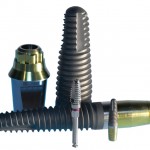
Osteoporosis is a common disease resulting from defective bone formation with increases in porosity and increased bone fragility. It affects over 3 million people in the UK and between2-3 million people worldwide. It affects women more than men and the two main types are postmenopausal and senile. Impaired bone metabolism may affect the osseointegration of dental implants and studies suggest that implants placed in low density bone have higher failure rates.
The aim of this review was to evaluate the survival rate of implants in patients with osteoporosis.
Methods
Searches were conducted in the PubMed/MEDLINE, Web of Science, Cochrane Library, and SciELO databases. This was supplements by hand searching a wide range of dental implantology journals. Two reviewers selected the studies and abstracted data with risk of bias being assessed using the Australian National Health and Medical Research Council (NHMRC) scale.
Retrospective studies, prospective studies, controlled and randomised clinical trials in patients have dental implants comparing patients with osteoporosis and patients with no systemic changes in bone metabolism were considered. Studies published in English involving a minimum of 5 patients and 6 months follow up were included.
The relative risk (RR) and 95% confidence interval (CI) of implant failure were calculated as well as the mean difference and 95%CI for marginal bone loss and meta-analysis carried out.
Results
- 15 studies were included in the qualitative analysis with 13 contributing to the quantitative analysis.
- The 15 studies included 8859 patients and 29,798 implants.
- Of the 15 studies, 2 were cohorts, 5 prospective, 5 retrospective, 2 case-controlled, and 1 cross-sectional.
- The average follow-up time was 5.85 years (range (0.75-22yrs).
- From 10 studies a non-significant difference in failure rate was seen with a 4.7% failure rate in patients with osteoporosis (33/702 implants) compared with 3.57% (147/4114) in health patients.
- The relative risk RR =1.39, (95%CI; 0.93 to 2.08) P = 0.11.
- At the patient level 5.85% (11/188) suffered implant failure compared with 4.89% (17/348) in the health group, RR= 0.98, (95%CI; 0.50 to 1.89) P = 0.94
- Meta-analysis (3 studies) showed a significant difference in marginal bone loss around implants between patients with and without osteoporosis (0.18mm, 95% CI 0.05-0.30, P=0.005).
Conclusions
The authors concluded: –
implants placed in patients with systemic osteoporosis did not present higher failure rates than those placed in patients without osteoporosis. Based on three studies included in the systematic review, implants placed in patients with osteoporosis presented greater marginal bone loss than those placed in control group subjects. Nevertheless, the values are within clinical parameters, and furthermore this is an outcome that should be analysed with caution. Accordingly, appropriately designed randomized controlled clinical trials presenting a sample size calculation are needed to analyse this matter further.
Comments
The authors have searched a good range of databases for this review although restricting inclusion to English language only studies may have an impact on the findings. It is perhaps not surprising that no randomised controlled trials were identified, although the broad range of included study designs has implications when considering the overall findings. The authors rated the quality of the evidence identified as low. It would however have been helpful if the risk of bias of individual studies assessed using a tool like the Newcastle –Ottawa scale which would have provided more detail than the NHMRC level of evidence scale. The authors note that 5 of the studies did not describe how osteoporosis patients were identified which some reviewers would have excluded. While the review overall suggests no difference between implant survival in patients with and without osteoporosis the findings should be viewed with caution because of the limitation with the available evidence.
Links
Primary paper
de Medeiros FCFL, Kudo GAH, Leme BG, Saraiva PP, Verri FR, Honório HM,Pellizzer EP, Santiago Junior JF. Dental implants in patients with osteoporosis: a systematic review with meta-analysis. Int J Oral Maxillofac Surg. 2017 Jun 23. pii: S0901-5027(17)31484-4. doi: 10.1016/j.ijom.2017.05.021.[Epub ahead ofprint] Review. PubMed PMID: 28651805.
